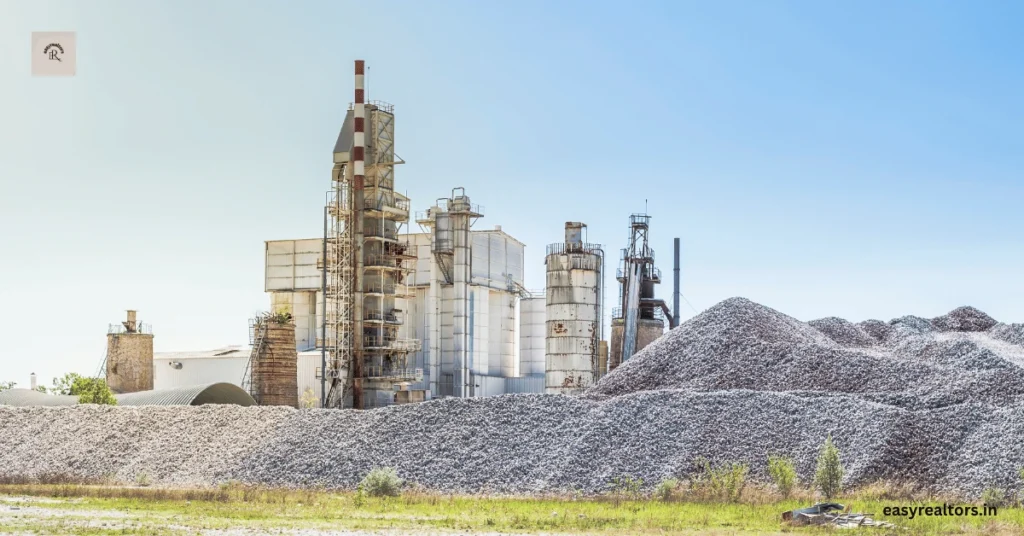Indian Cement Industry: Trends, Challenges, and Prospects

The Indian Cement Industry plays a vital role in supporting the nation’s infrastructure and real estate development. The global cement market, estimated at USD 405.99 billion in 2023, is expected to grow at a CAGR of 4.3%, reaching USD 592.38 billion by 2032. Despite global growth, the Indian Cement market faces challenges due to fluctuating demand, regional pricing pressures, and environmental concerns.
Key Trends in the Indian Cement Industry
- Market Performance and Projections
The Indian Cement Industry faced setbacks in the June 2024 quarter, with intense heat and a slowdown in construction activities linked to elections. Most manufacturers reported subdued demand, though some major players saw stable performance.- September 2024 Outlook: The Indian Cement Industry is projected to rebound with a 4.1% growth in consumption as construction activities pick up pace. However, persistent weak demand and regional price disparities remain critical issues.
- Pricing and Profitability Challenges
- Cement prices in the Indian Cement market stayed under pressure in mid-2024, particularly in the southern region, where the steepest declines were recorded.
- A brief price hike in September 2024 offered some relief, but continued demand softness could lead to rollbacks.
- Profitability across the Indian Cement Industry was impacted by rising input costs and lower price realizations, with operating margins contracting by 60 basis points to 14%.
Government Initiatives Supporting the Cement Industry
The government’s infrastructure push offers robust support to the Indian Cement Industry, enabling demand growth across real estate and public infrastructure projects.
- Capital Expenditure: With Rs11.11 lakh crore allocated for FY2024-25, the government has prioritized large-scale projects, benefiting the Cement Industry.
- Initiatives like the Pradhan Mantri Awas Yojana, highway development, and metro rail projects are expected to further bolster cement consumption in the coming quarters.
Sustainability and the Indian Cement Industry
As a significant contributor to emissions, the Indian Cement Industry is focusing on sustainability to align with global environmental goals.
- The industry reduced CO2 emissions to 0.56 tonnes per tonne of cement in 2023, with a long-term target of 0.35 tonnes by 2050.
- Programs like the Low Carbon Technology Roadmap (LCTR) and the Perform, Achieve, and Trade (PAT) Scheme demonstrate the Indian Cement Industry’s commitment to reducing its carbon footprint.
Export Market Trends in the Indian Cement market
Export trends reflect mixed performance in the Cement Industry.
- Sri Lanka continues to be the largest importer of Indian cement, but export values dropped significantly from Rs6,998.9 million in 2015-16 to Rs2,514.7 million in 2023-24.
- Rising global inflation and higher import costs have underscored the need for efficiency improvements and a focus on higher-value export markets.
Challenges Facing the Indian Cement Industry
- Regional Demand Disparities: The Indian Cement Industry faces uneven demand, with the southern region experiencing sharper price drops compared to other regions.
- High GST Rates: Elevated tax rates continue to affect affordability, posing a challenge to the growth of the Cement industry.
- Environmental Concerns: Meeting emission reduction targets while managing costs remains a pressing issue for the industry.
The Path Forward for the Indian Cement Industry
For sustainable growth, the Indian Cement market must adopt strategic measures:
- Cost Optimization: Enhancing efficiency to lower production costs and maintain profitability.
- Green Technology Investments: Prioritizing eco-friendly manufacturing processes to align with environmental targets.
- Advocacy for GST Reforms: Working towards lower GST rates to make cement products more affordable.
While government-led infrastructure initiatives provide a strong foundation for growth, the Indian Cement Industry’s ability to address regional pricing challenges, improve operational efficiencies, and embrace sustainability will determine its long-term success.
Read more: Indian Real Estate Equity Investments to Hit $10B in 2024
for more updates follow us on instagram


